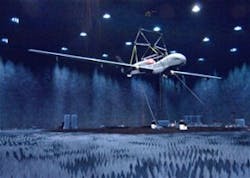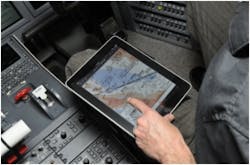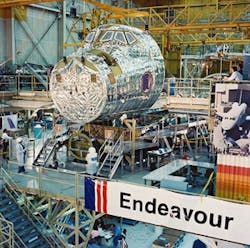otor noise reduction methods being investigated by DLR and NASA engineers
Posted by John McHaleGOTTINGEN, Germany, 13 April 2011. Engineers at the German Aerospace Center (Deutsches Zentrum fur Luft-und Raumfahrt; DLR) and NASA are developing methods to reduce helicopter noise through investigating the exact nature of rotor noise. The collaboration between NASA and the DLR is the subject of a bilateral agreement. "Our speciality at DLR Gottingen is optical measurement technology for fluid flows," says Markus Raffel, head of the helicopter department at the DLR site in Gottingen. "Almost everything you hear from a helicopter is aerodynamic noise. A large part of this comes from what are called rotor tip vortices." Blade tip vortices occur at the outer end of the rotor blade.The researchers are using a test stand with a rotor model from RWTH Aachen for their investigations. They are using seven high-speed cameras, lasers, and high-powered light-emitting diodes (LEDs) to make the vortex visible.
"Reduced pressure on the top of the blade draws air upwards producing a vortex. The blade tip vortex is then directed downwards," explains DLR researcher Karen Mulleners, who is carrying out the tests in collaboration with NASA colleagues. "When other rotor blades subsequently come into contact with these vortices, the 'chopping' or throbbing noise that is characteristic of helicopters is produced.""The special thing here is the simultaneous use of three different optical measurement techniques," Raffel explains. The density and the velocity fields in the vortices and the deformation of the rotor blades are recorded. As in medicine, multiple investigative methods help reach the correct diagnosis. Thanks to the latest high-speed cameras, filming at speeds of as many as 5,000 frames per second is possible. This enables the turbulent, constantly changing vortex to be observed continuously for the first time. Until now, the time resolution of cameras has only been sufficient to capture snapshots.
The rotor tip vortices are also responsible for another problem; when they touch the ground during take-off or landing, dust or snow can be swirled up, DLR officials say. This can put the pilot in danger as he faces what is known as a brownout -- a complete loss of orientation."The team at Gottingen is among the best in the world," says NASA scientist James T. Heineck. NASA researchers are contributing the most up-to-date measurement technology through their experiments in the largest wind tunnel in the world, DLR officials say.The current measurements will form the basis for future tests in a wind tunnel. Research using a real helicopter is planned for the future.


